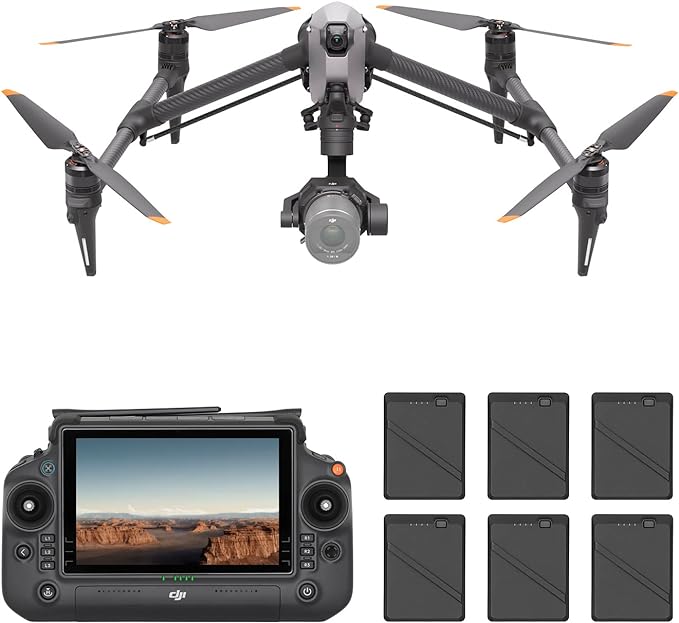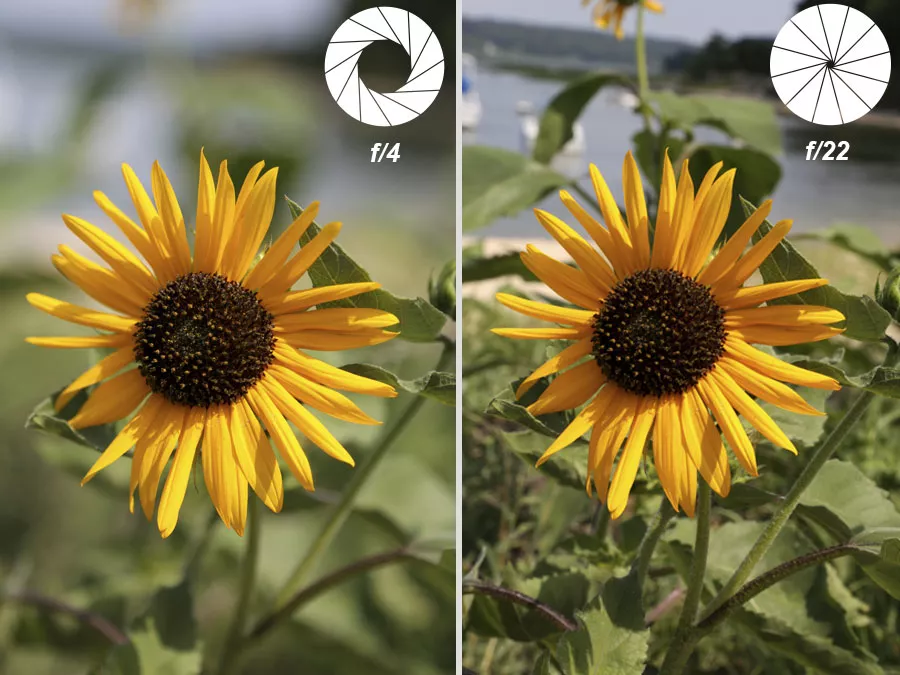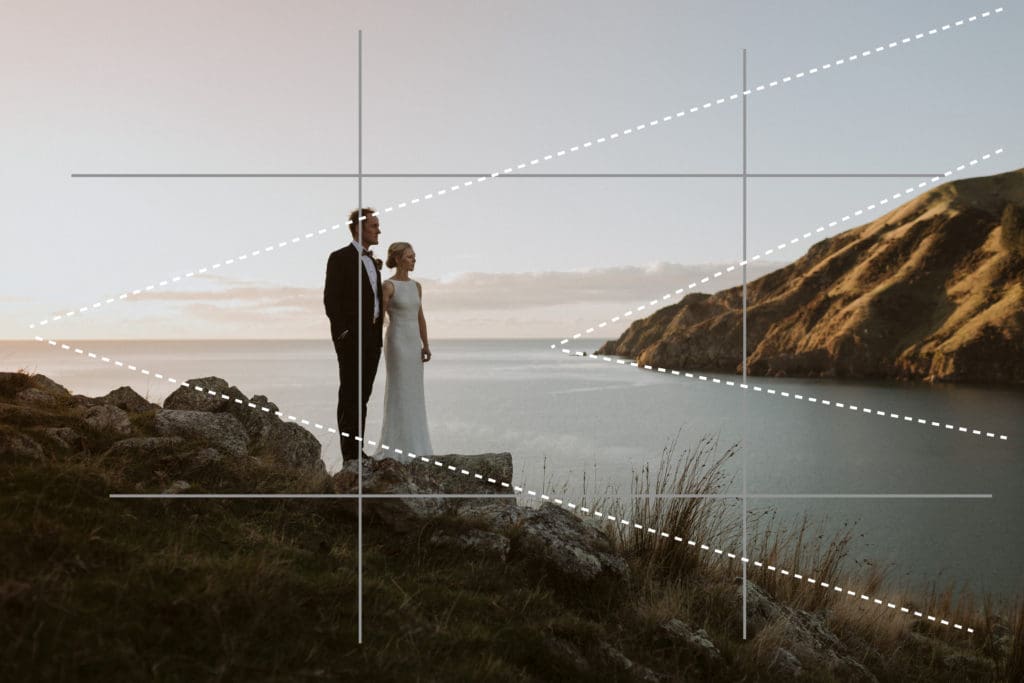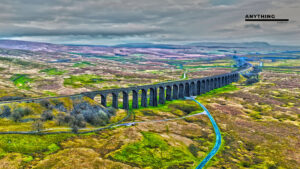Aerial photography is not just a craft; it’s a unique perspective that transforms the mundane into the magnificent. It invites us to soar above and see the world through a lens of beauty, intricacy, and awe. Whether you’re a drone enthusiast eager to capture the rolling hills of the English countryside, an architect needing detailed views of a project site, or a filmmaker seeking to add breathtaking aerial shots to your next production, this blog post is your gateway to elevating your vision. From mastering your equipment and settings to flying responsibly and engaging with a community of fellow flyers at Drone-Gigs.com, we cover it all. Plus, for those seeking unparalleled professional aerial photography services, discover how AnythingAerial.co.uk can bring your projects to life. Join us as we explore the skies and unlock the full potential of aerial photography, where every shot tells a story and every perspective opens a world of possibilities.

Table of Contents
Choosing the Right Equipment for Aerial Photography
Choosing the Right Equipment for Aerial Photography For aerial photography enthusiasts and seasoned UK licensed drone pilots alike, the choice of equipment can make all the difference in capturing those stunning, high-quality images from above. Let’s explore the key factors to consider when selecting the right equipment to enhance your aerial photography.
Drones: Your Sky-High Companions
A solid, reliable drone is the backbone of aerial photography. The DJI Mavic Air 2 is a sterling choice for its balance of size, camera quality, and flight capability. For extended sessions or more demanding professional needs, the Autel Robotics EVO II stands out with its longer flight time and high-resolution camera.
Cameras: The Lens to the World
The camera is where your creative vision comes to life. The Hasselblad L1D-20c, featured on the DJI Mavic 2 Pro, offers superb image quality and color accuracy, crucial for those breathtaking aerial shots. If your drone allows for an attachable camera, the Sony RX100 VII may be your pick with its stellar autofocus and high-resolution capabilities.
Gimbals: Ensuring Steady Horizons
Your aerial footage’s stability hinges on a quality gimbal. Drones like the DJI Phantom 4 Pro V2.0 boast a three-axis gimbal that promises sharp, stable images, even when you encounter the unexpected gusts of the British Isles.
Portability: The Traveler’s Choice
For the photographer always on the move, a compact and easily transportable drone is paramount. The DJI Mini 2 not only fits into small spaces but also provides quality without compromise. Conversely, the DJI Inspire 2 caters to pilots who prioritize rapid deployment and advanced control.
Feature-Rich Drones: Smart Flying
In a technology-driven field, features like obstacle avoidance and intelligent flight modes found in the DJI Air 2S are invaluable. And for dynamic subjects, the Skydio 2 offers cutting-edge autonomous tracking to keep your shots in focus and your subjects framed perfectly.

Equipping yourself with the right drone and camera is the first step towards taking aerial photography from a pastime to an art form. It’s about finding the perfect match for your needs, ensuring that when you take to the skies, you’re ready to capture the world in all its splendor.
Mastering Your Settings for Aerial Photography
Mastering Your Settings for Aerial Photography To truly excel in aerial photography, a UK licensed drone pilot must not only have a keen eye for framing the shot but also a firm grasp of the various camera settings that will bring their vision to life. Here’s a straightforward guide to understanding and mastering your settings to enhance the quality of your aerial photography:
Aperture: Controlling Light and Depth
The aperture affects the depth of field and the amount of light entering the lens. A lower f-stop lets in more light, which is ideal for low-light conditions but also narrows the depth of field. Use a higher f-stop for a greater depth of field, keeping more of the landscape in focus.
Shutter Speed: Freezing the Moment
Shutter speed is critical in capturing sharp images. A faster shutter speed will freeze motion, eliminating blur from your aerial shots. This is particularly important when photographing moving subjects or to counteract any drone movement caused by the wind.
ISO: Balancing Light Sensitivity
ISO determines your camera’s sensitivity to light. Lower ISO values result in less noise and a higher quality image but require more light. Increase ISO only when necessary, such as during dusk or dawn, to maintain image clarity.
White Balance: True to Color
White balance adjusts the color balance in images, ensuring the colors you capture are as accurate as possible to real life. Adjust your white balance according to the lighting conditions to avoid color casts, which can occur during different times of the day.
Exposure Compensation: Fine-Tuning Brightness
Exposure compensation gives you the ability to adjust the exposure in tricky lighting conditions. It’s a quick fix for when the camera’s auto-exposure isn’t getting it quite right, especially in high-contrast scenarios.

By mastering these settings, you can ensure that every flight yields the best possible images, no matter the conditions. Aerial photography offers a unique challenge in that you have to adjust your settings for a viewpoint that is constantly moving and changing; mastering these skills is what allows you to turn those challenges into breathtaking results.
Planning Your Shots for Aerial Photography
Planning Your Shots for Aerial Photography In the realm of aerial photography, the adage “failing to plan is planning to fail” couldn’t be more apt. Whether you’re surveying the bucolic countryside of the UK or capturing the hustle and bustle of London from above, planning your shots can make the difference between a good image and a masterpiece. Here’s how to meticulously plan your aerial shots for optimal impact:
Scouting Your Location
Utilize satellite imagery and mapping software to get a lay of the land before your drone ever leaves the ground. Look for landmarks, intriguing terrain, and any potential no-fly zones. If you’re aiming for pastoral scenes, the rolling hills of the Lake District may call to you. For architectural splendor, the geometric sprawl of a city like Manchester from above can offer a plethora of captivating angles.
Understanding Composition
Good composition is the linchpin of captivating photography. Employ techniques like the rule of thirds to give your images balance and interest. In the air, this might mean positioning a winding river off-center to lead the eye through the frame or capturing the cross-section of a roundabout on the outskirts of a town to create geometric appeal.
Timing for the Perfect Light
The time of day is crucial in photography, and when it comes to aerial shots, it’s even more critical. Dawn and dusk provide golden-hour hues that can make your images sing with warmth and depth. Imagine capturing the ancient majesty of Stonehenge as the day’s first light casts long shadows across the grass.
Weather Awareness
Always check the weather forecast before a shoot. Overcast skies can diffuse light beautifully for a soft effect, but clear skies at midday might cause harsh shadows. A stunning aerial shot could be the play of sunlight through the mist over the Scottish Highlands, which means waiting for that perfect weather window.
Legal and Safety Considerations
Be mindful of local regulations and privacy laws, especially when flying near populated or sensitive areas. Knowing the legalities will save you from potential disruptions and ensure your shoot goes smoothly.

By planning your aerial shots, you’re not just preparing to take a picture; you’re setting the stage for storytelling from the skies. Each flight is an opportunity to showcase something spectacular, so take the time to plan and watch as your aerial photography portfolio takes flight.
Mastering Composition Techniques for Aerial Photography
Mastering Composition Techniques for Aerial Photography A well-composed aerial photograph speaks volumes and conveys a narrative from an extraordinary vantage point. As a UK licensed drone pilot, utilizing various composition techniques will greatly enhance the visual appeal of your aerial photography. Here’s a rundown of essential techniques and how to apply them, including suggestions for iconic UK locations that could serve as perfect subjects:
The Rule of Thirds: A Foundation for Balance
Divide your frame into a 3×3 grid and place points of interest at the intersections or along the lines. This time-tested guideline aids in creating balanced and engaging images. For instance, positioning the Brighton Pier to intersect at one-third of the frame can create a more dynamic composition than if it were centered.
Leading Lines: Guiding the Viewer’s Eye
Use natural or man-made lines to lead the eye to your main subject. The snaking Thames River can serve as a natural guide, drawing the viewer’s gaze through the landmarks of London, or the radial lines of the Giant’s Causeway in Northern Ireland can lead to the horizon in a compelling composition.
Patterns and Symmetry: Capturing Visual Rhythm
Repeating patterns and symmetry provide a sense of order and rhythm. From above, the uniformity of crop fields in Norfolk can create mesmerizing patterns, while the symmetry of the Royal Crescent in Bath can offer a pleasing aesthetic from an aerial perspective.
Use of Negative Space: Emphasizing Subject Isolation
Negative space can help to isolate the subject, drawing focus to it. The expansive negative space of the Scottish Highlands can be used to emphasize a solitary castle or a lone winding road, creating a dramatic contrast between the landscape and the focal point.
Perspective: Offering a New Viewpoint
Shifting the perspective can unveil new details and compositions. A lower altitude might reveal the textures of Brighton’s pebble beaches, while a higher one could illustrate the sprawling urban tapestry of Birmingham’s cityscape.

Incorporating these composition techniques into your aerial photography can transform your images from simple snapshots into captivating works of art. By carefully planning and considering your composition, you can capture the essence of any location, be it the rugged contours of the UK’s natural landscapes or the architectural wonders of its cities.
Experimenting with Perspectives in Aerial Photography
Experimenting with Perspectives in Aerial Photography, perspective is everything. It shapes the narrative of the image, offering unique views that can’t be achieved from the ground. For UK licensed drone pilots, experimenting with different perspectives can unveil a landscape’s hidden stories and provide an astonishing sense of place. Here’s how to play with perspectives to breathe life into your aerial shots:
High-Angle Shots: The Bird’s-Eye View
The quintessential drone shot, a high-angle perspective gives you a comprehensive view of the landscape below. It’s perfect for capturing the sprawling grandeur of cityscapes or the intricate patterns of natural landscapes, like the geometric farmlands in the Vale of York.
Low-Angle Shots: Intimacy from Above
A low-angle perspective provides a more intimate view and is perfect for highlighting the features of a subject, be it the rugged details of Hadrian’s Wall or the people gathered in the courtyards of Oxford’s historic colleges.
Side-On Views: The Horizon Beckons
Side-on shots offer a blend of sky and land, providing context and scale. This perspective works wonderfully when capturing the dramatic cliffs of the Jurassic Coast, where the vastness of the sea meets the permanence of the cliffs.
Oblique Angles: Dynamic and Engaging
An oblique angle, which is neither vertical nor horizontal, can bring a dynamic feel to the image. Imagine capturing the ascent of Snowdonia’s mountain ranges or the undulating dunes of Norfolk’s coastline with this energizing angle.
360-Degree Panoramas: A World Unfurled
Stitching together a series of shots for a 360-degree panorama allows viewers to be immersed in the environment. Iconic city centres like Edinburgh or panoramic vistas like those in the Lake District are perfect candidates for this comprehensive perspective.

By varying your approach to perspective, you can turn a simple flight into an exploration of viewpoints, each offering its own visual story. A change in angle can reveal patterns in the mundane and majesty in the ordinary, challenging you to constantly seek out new ways to view the world from above.
Considering Post-Processing in Aerial Photography
Considering Post-Processing in Aerial Photography Capturing the shot is just the beginning. Post-processing is a crucial step in aerial photography that allows you to refine and enhance your images and footage. As a UK licensed drone pilot armed with tools like Photoshop and Premiere Pro, you can transform your aerial captures from great to exceptional. Here’s a guide to the post-processing steps that can elevate the quality of your work:
Editing for Impact with Photoshop
Use Photoshop to adjust the lighting and colors of your aerial photographs. Enhance the vibrancy of a sunset over the Scottish Highlands or the clarity of the architectural lines in London’s skyline. Tools like the ‘Adjustment Layers’ for contrast, brightness, and saturation can make your images pop.
Refining Shots with Healing Tools
Drones can sometimes capture unwanted objects, like a stray bird or plane. Photoshop’s ‘Healing Brush’ can be used to remove these blemishes, ensuring that nothing distracts from the serenity of your Lake Windermere morning mists.
Creating Panoramas
Merge multiple shots into a panoramic image with Photoshop’s ‘Photomerge’ feature. A panoramic shot of the rolling hills of the Peak District can provide a sweeping perspective that a single image can’t capture.
Cinematic Color Grading with Premiere Pro
For videographers, Premiere Pro’s color grading capabilities can dramatically alter the mood and feel of your footage. A drone video flying through the Stonehenge site can be given a mystical ambiance with a cooler color temperature or a vintage feel with sepia tones.
Stabilizing Footage for a Smooth Finish
Utilize Premiere Pro’s ‘Warp Stabilizer’ to smooth out any shaky footage caused by wind or sudden drone movements. This can be particularly useful for aerial footage of dynamic events, like festivals in Edinburgh, ensuring a smooth viewing experience.
Adding Music and Effects
Premiere Pro allows you to add music and sound effects to your drone videos, providing an audio backdrop that complements the visual experience. Imagine adding a subtle soundtrack to footage of a serene flight over the waters of Loch Ness.

With a judicious touch in post-processing, you can ensure that your aerial photography stands out, with polished, professional results that truly reflect the vision and intent behind each shot. Whether it’s through enhancing colours, removing imperfections, or adding cinematic touches, post-processing is your path to taking your aerial imagery to new heights.
Flying Responsibly and Safely in Aerial Photography
Flying Responsibly and Safely in Aerial Photography As a drone pilot, flying responsibly and safely isn’t just about adhering to regulations; it’s about respecting the craft, the community, and the environment around us. In the UK, aligning with CAP 722 guidelines is crucial for ensuring that aerial photography is conducted without compromising safety. Let’s delve into the best practices for responsible drone flying:
Understanding CAP 722
CAP 722 is the Civil Aviation Authority (CAA)’s guidance document for unmanned aircraft, which lays out the do’s and don’ts for drone operations. It’s essential to be well-versed with this document to understand the operational limits, such as maximum altitude and distance from the pilot, ensuring you’re flying within legal bounds.
Pre-Flight Checks
Before taking off, conduct thorough pre-flight checks. This includes inspecting your drone for any damage, checking battery levels, and ensuring all firmware is up to date. Also, assess the takeoff and landing areas to make sure they’re clear of people, animals, and obstacles.
Maintaining Visual Line of Sight (VLOS)
Always keep your drone in sight. This means staying within 500 metres horizontally and 400 feet vertically, as per CAP 722 regulations. This practice not only adheres to the law but also significantly reduces the risk of incidents.
Respecting Privacy and No-Fly Zones
Be mindful of privacy concerns by not flying over private property or crowds without permission. Additionally, respect no-fly zones, which include areas near airports, government facilities, or military bases. Use apps and resources to help you identify these zones.
Weather Conditions and Environmental Awareness
Check the weather forecast before your flights. High winds, rain, and fog can not only affect your drone’s performance but can also increase the risk of losing control. Be environmentally conscious by avoiding disturbance to wildlife, particularly in sensitive areas like nature reserves.
By flying responsibly and safely, you not only protect yourself and your equipment but also ensure the continued enjoyment and freedom of aerial photography for all. Remember, safe flying habits contribute to the positive reputation of drone pilots and the wider community’s acceptance of drones as part of the aviation landscape.
Concluding Thoughts on Aerial Photography
Aerial photography is a dynamic field that combines the joy of flight with the art of image-making. As a UK licensed drone pilot, you are at the frontier of capturing the world from new heights, documenting the beauty of our landscapes, and contributing to various industries with your unique skills. Here’s a wrap-up of what we’ve covered and how to move forward in your aerial photography journey:
The Art and Discipline of Aerial Photography
The journey of an aerial photographer is as much about artistic expression as it is about discipline. Balancing creative techniques with rigorous safety practices allows for the responsible growth of this exciting field.
Embrace Continuous Learning
The landscape of drone technology and aerial photography is ever-evolving. Staying abreast of the latest regulations, gear, and software will keep your skills sharp and your services in demand.
Showcase Your Work
Use your portfolio to not only showcase the splendor of the locations you’ve captured but also to highlight your versatility and skill set. Whether it’s the rugged tranquility of the Scottish Highlands or the architectural elegance of London’s cityscape, let your images tell a story.
Engage with the Community
Building connections with other drone pilots and enthusiasts can open up new opportunities for learning and collaboration. Share your knowledge and experiences, and be open to learning from others.
As we conclude, remember that your work as an aerial photographer is not just about the images you capture but also about the responsible practices you follow and the community you build along the way. Keep exploring, keep learning, and keep sharing your unique perspective from the skies.
Call to Action: Elevate Your Aerial Photography Journey
Whether you’re a seasoned drone pilot or a client seeking unparalleled aerial photography services, your next adventure starts here. Embrace the opportunity to explore, capture, and share the world from an extraordinary perspective. Here’s how you can take the next step with us:
For Drone Pilots: Join Our Community at Drone-Gigs.com
Are you ready to showcase your skills, learn from peers, and find unique opportunities to fly? Subscribe to Drone-Gigs.com, where you can connect with a community that shares your passion. Enhance your expertise through collaboration, access exclusive gigs, and be at the forefront of aerial photography innovation. Let’s soar to new heights together.
For Clients: Discover Premium Aerial Photography Services
At Anything Aerial Ltd. we offer a wide range of aerial photography services tailored to elevate your projects. From breathtaking landscape captures of the Scottish Highlands to detailed urban surveys in the heart of London, our expertise ensures your vision takes flight. Explore our portfolio and let our drones capture the essence of your project with unparalleled clarity and creativity.

Join us in pushing the boundaries of what’s possible with aerial photography. Whether by enhancing your skills and joining a community of like-minded enthusiasts at Drone-Gigs.com or by leveraging the exceptional services offered at AnythingAerial.co.uk to bring your project to life, the sky is not the limit—it’s just the beginning. Let’s embark on this journey together and see the world from a new perspective.



